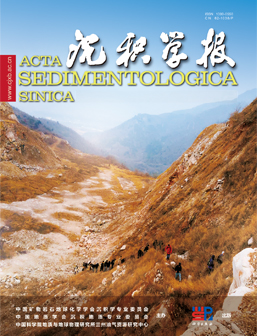Sedimentary Characteristics and Evolution of the Upper Triassic in Jiangai Darina area, Central Qiangtang Basin and their Hydrocarbon Geological Significance
doi: 10.14027/j.issn.1000-0550.2025.008
- Received Date: 2024-12-07
- Available Online: 2025-04-03
-
Key words:
- division of sedimentary facies /
- sedimentary evolution model /
- source-reservoir evaluation /
- Upper Triassic /
- Central Qiangtang Basin
Abstract: Abstract: [Objective] The Late Triassic is a crucial period for the Mesozoic Qiangtang Basin evolution. However, the previous researches concentrated on the sedimentology of the Upper Triassic strata are rare in Qiangtang Basin, which is not conducive to elaborately analyzing the characterization of Late Triassic sedimentary evolution and predicting the distribution of source and reservoir rocks. [Methods] Based on the measured section, we synthesized the thin section, grain size of detrital particle and typical primary sedimentary structure to identify the sedimentary facies of the Jiapila, Bolila and Bagong Formations in the Jiangai Darina section and then establish the Late Triassic sedimentary evolution model in the central Qiangtang Basin. In addition, the whole-rock and clay minerals, physical properties, and total organic carbon (TOC) contents of sandstone and mudstone samples were analyzed to evaluate the characteristics of source and reservoir rocks. [Results] (1) In the Jiangai Darina section, the sedimentary facies of the Upper Triassic strata have experienced the evolution of the fan-delta facies→barrier-free coastal facies→carbonate ramp facies→neritic shelf facies→delta facies upward, and can be identified ten subfacies and eight microfacies totally. (2) The Upper Triassic strata in the study area constitute an upward deepening transgressive succession and then shallower regressive succession. Among them, the transgressive succession is mainly composed of the Jiapila and Bolila Formations, while the regressive succession is mianly composed of the Bagong Formation. (3) The sandstone samples from the Jiapila and Bagong Formations are ultra-low porosity and ultra-low permeability reservoir with secondary pores primarily. The mudstone samples of the Bagong Formation from the Jiangai Darina section are poor source rocks and non source rocks, while become better to north (Woruoshan section). We inferred that the depression between Jiangai Darina and Woruoshan may develop well source rocks and have a good exploration prospect based on the latest tectono-lithofacies paleogeographic data, but it still need to be confirmed. [Conclusion] These results would provide a valuable reference for the researches of Late Triassic sedimentary-tectonic evolution and oil and gas resource evaluation in Qiangtang Basin.
| Citation: | Sedimentary Characteristics and Evolution of the Upper Triassic in Jiangai Darina area, Central Qiangtang Basin and their Hydrocarbon Geological Significance[J]. Acta Sedimentologica Sinica. doi: 10.14027/j.issn.1000-0550.2025.008 |






 DownLoad:
DownLoad: